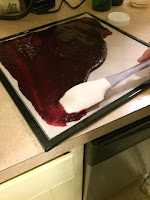One of the “must have” bramble varieties for a budding winery has to be the wineberry – Rubus phoenicolasius, also called Japanese Wineberry, or Wine Raspberry (see Wikipeadia for more info) It is a native species in China, Japan and Korea and was introduced to North America in the late 19th century for breeding new hybrid raspberry varieties. These berries are very tasty, with a more intense raspberry flavor than raspberries themselves. Wineberries are sweet but also tart, and the higher level of acidity is what makes them so good for jams and for wine.
Wineberries now grow wild in parts of the United States, primarily in the Appalachian Mountains – and they certainly grow around our region! They are commonly found along the edges of fields and roadsides, but are not widely cultivated. Actually, wineberries are considered an invasive weed in many states, including Pennsylvania.There is a great blog post on the Cumerland County Extension website about wineberries.
What makes this type of bramble so unique is the way that the berries ripen inside a calyx – a remainder of the flower. The calyx folds back as the fruit reaches maturity and a shiny, slightly sticky and very tasty berry emerges.

Despite the fact that these berries are not widely cultivates, we dug some out this weekend and planted them in a new row, next to a row of red raspberries. We’ll see how cultivation affects these berries. Hoping that we can contain them in a neat row and that they bear a lot of fruit. Can’t wait to make some jam and maybe some wine as well.
















